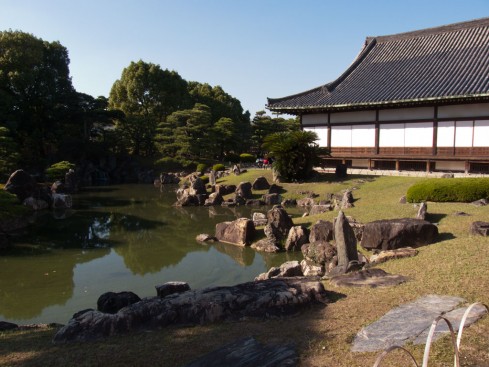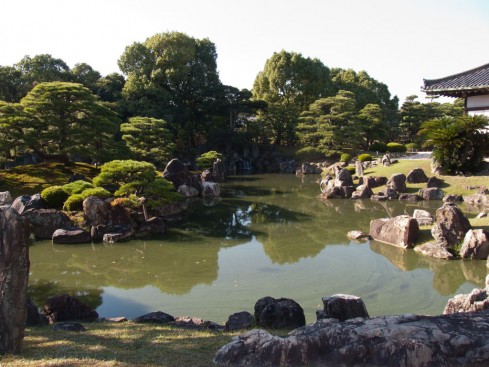October 27, 2011
Nijou-jou (“Second Street Castle”) was built by Ieyasu the first Tokugawa Shogun after he established himself as the supreme ruler of Japan in 1601. It was intended to serve as the Shogun’s official residence in Kyoto.

Though the castle has an outer wall and moat it was never really intended to hold off an attacking army. Instead it was to serve as a symbol of Ieyasu’s power and dignity and to overawe the western lords (whose loyalty he had reason to suspect)
Most of the enclosed area is devoted to beautifully landscaped gardens.
The main building is called the Ninomaru Palace. No photography is allowed inside which is regrettable since the contents are very impressive.

There are 33 large tatami rooms constructed with elaborately carved wood, with walls covered with exquisite paintings on gold leaf. This small image from the brochure may give you some idea of what it looks like.

The Ninomaru Palace features the famous “nightingale floors”. The wooden floorboards are designed to make a chirping sound when you walk on them, which would hopefully alert the guards if a ninja assassin should sneak in.
The rear wall of the Ninomaru Palace is constructed with removable panels. On warm sunny days the inhabitants could sit inside and contemplate the beauty of the garden.

Ironically, after he went to all the trouble of the of constructing such a magnificent residence, Ieyasu and his successors spent very little time here, totaling only a few weeks. The Tokugawa shoguns preferred to rule from their eastern capital of Edo (now Tokyo). For two and a half centuries the Nijou Zaiban, an elite corps of 50 hand-picked samurai, took care of the castle year after year, keeping it ready for a shogunal visit that never came.





